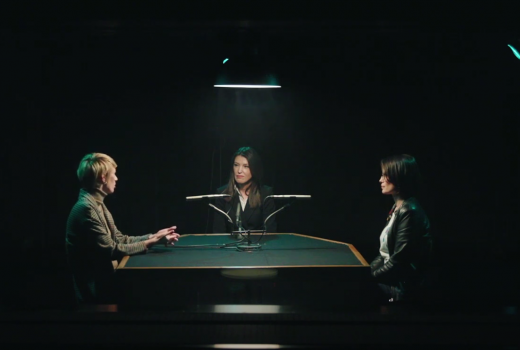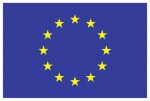Regional documentaries on media and journalism you must watch: What makes a good documentary?

Regional documentaries on media and journalism you must watch: What makes a good documentary?
10/03/2023
Mirza Ajnadzic recommends documentaries that explore the work of journalists and the struggles they face.
Film theoretician Bill Nichols wrote of six types of documentaries—poetic, expository, reflexive, observational, performative, and participatory—each with distinctive characteristics. It is about the way you tell your story. A poetic documentary speaks mainly in visuals, with few to no interviews and no narration. In other words, the onus is on the director of photography to take striking images capable of telling the story on their own. Reflexive documentary creates a direct relationship between the director and the audience, whereby the director takes a role in the film itself. Probably one of the first and still one of the best reflexive documentaries is Dziga Vertov's “Man with a Movie Camera” from 1929.
Observational documentaries are somewhat similar to poetic ones inasmuch as they are primarily focused on meticulous observation, with the camera workflow dominated by long shots. Performative documentaries - the filmmaker turns the movie into an entertaining performance. The author often has close personal interest in the subject matter which is why such documentaries are packed full of strong opinion. The participatory type is where the filmmaker participates in the story rather than observing it. They would be in front of the camera, asking questions. They do not influence the subject but tell their version of the truth or how they see it. The best examples are films by Louis Theroux, a British-American documentarian and journalist.
The most common type of documentary is expository. Such films tend to educate and explain specific issues, trends or events. They feature interviews, narration, different type of archive materials, visualized data… all in order to make the subject matter as clear as possible to the audience. Most documentaries I’ll mention here fall in this category. To be clear, I looked for documentaries about, if not necessarily made by journalists. So, the work of journalists, struggles they face, stories they pursue are the subject matters of the films I selected.
RESPONSIBLE
the role of media and journalism in war-mongering propaganda
Arhitel production from Serbia was founded in 1993, making a mark first with the series “Images and Words of Hate”. Their main goal is to fight against censorship and media misuse when it comes to dealing with the past. The hour-long 2022 film “Responsible”, authored by Ivana Lalic and directed by Goran Kovacic, shows how media outlets were used as propaganda tools in the 1990s Serbia. It features interviews with journalists and archive footage about media outlets, editors, and journalists that were part of war-mongering machinery back then. “Responsible” is a classic narrative expository TV documentary that seeks to explain issues and educate the public, in this case about how and why media professionals end up as propaganda tools. The film deploys a simple yet probably the most effective method of telling this kind of a story, with a series of interviews “talking head” style driving the narrative. “Responsible” takes us from the 1990s to the present day, showing the importance of obedient media to undemocratic political regimes and making us question how things would have turned out had the media been independent.
USING FORCE ON THE SEVENTH – MONTENEGRO CASE
“In a nutshell - a gloomy picture of the atmosphere where the media are not allowed to work freely and have a possibility to be corrective of the government and one of the pillars of democracy.” - narrator quote from the documentary.
Produced in 2018, “Using Force on the Seventh – Montenegro case” is an hour-long documentary about attacks on journalists. It offers a gloomy picture of a society in which investigative journalism comes at a price. The film features journalists from all around Montenegro who reported on cases of corruption, and were attacked and in some cases murdered for that. What makes the atmosphere in the film even gloomier is that none of the cases had been resolved by Montenegrin police, prosecutors and judges. The impunity for crimes against journalists, authors suggest, leads to more attacks on their colleagues as well as a logical question: are authorities complicit in these attacks? This narrative documentary uses interviews, archive footage, and act-out scenes for B-roll coverage.
DANGEROUS NETWORK
“65% of online attacks on journalists are directed to female journalists.” - quote from the documentary.
The 12-minute documentary Dangerous Network from North Macedonia is about online attacks on female journalists. It is based on research by PINA (Platform for Investigative Journalism and Analysis). This documentary is balancing between being a video reportage, a film, and a propaganda video. The authors used CGI (Computer Generated Imagery), interviews, and a B-roll that follows and reveals bits of the everyday life of participants, adding to the idea of a filmic experience.
JUNK FOLDER/BURDEN OF EXPERIENCE/THE PRICE OF TRUTH
Series of documentaries produced by SEENPM and Mediacentar Sarajevo
These three documentaries were produced by SEENPM and Mediacentar as part of the Resilience project. Junk Folder, directed by Alen Šimić, was first screened in September 2021. It tells the story of fake news that influenced Western Balkan societies in recent years. This 30-minute film offers refreshing storytelling style. The authors used a lot of very well thought out CGI for the B-roll to create a huge junk dumpsite, suggesting, as I understand, the proper place for fake news. Especially striking was a shot of pigeons eating from this dumpsite - again a clever storytelling depicting a society “eating-up what is served” even though it’s trash. Excellent interviews also helped Šimić make an entertaining documentary of this important, but not intrinsically filmic, subject. It is witty, visually interesting and tells an important story, so it is well worth watching.
The Burden of Experience, directed by Sabrina Begović Ćorić, was published in November 2022. In terms of storytelling, visuals, and directing, it is, in my view, the best out of all the films mentioned here. It tells the story of three leading women journalists from Bosnia, Kosovo and Serbia in a very simple way. It is based on a conversation in a podcast studio set up among the three protagonists. They discuss threats they face daily because of their work and how it affects their everyday life, an important topic told in a simple yet effective way.
The Price of Truth is the last documentary in this series, published online only this February. It focuses on attacks on journalists in Serbia. “The film follows journalists Milan Jovanović, who lost his house to an arson attack, Vladimir Mitrić, who has lived under police protection for 18 years, and investigative journalist Jelena Zorić." - the logline of the film explains. The film starts with a narrator-like testimony of Milan Jovanović as the viewers are taken to a visual aftermath of an arson attack on him and his wife. This is followed by the story of journalist Vladimir Mitric, who lives under police protection, and investigative journalist Jelena Zoric. Each of the three stories could itself be a documentary, which to an extent I desired them to be. However, they mesh well with one another to make a single documentary with good visual storytelling by the author Valentina Delić, making it a must-watch.
What makes these three documentaries interesting is the synergy between media-focused CSOs, which obviously seek to advocate on important societal issues, and filmmakers, whose primary interest is, naturally, in the film side of things.
See short video compilation of all documentaries from the list here. (WARNING: The following video contains content that some may find disturbing!)
INSTEAD of CONCLUSION
Journalism and documentary filmmaking have a lot in common. Both look for stories worth telling, especially those that need to be told. There is a growing trend for journalists and media outlets to produce documentaries to tell a story. Journalists often find it difficult to adopt the show, don’t tell approach, a technique of film storytelling that relies primarily on visual content. What perhaps is lacking in documentary filmmaking by journalists and media outlets in the region are fresh approaches in their visual storytelling. And this is not to say that there is no place for a simple narrative expository film - sometimes it is still the best way to tell a specific story.
The way we chose to tell the story sometimes matters as much as the story itself. Just watch a film like the 2008 “Waltz with Bashir” by Ari Forman. This is an animated documentary in which the director interviews his fellow war veterans in order to fill the gaps in his memory of 1982 events in Lebanon. The story would be amazing no matter what, but the way it was told made it a great film that it is. If you are tempted to think that films about journalism or journalistic movies would lack drama, make sure you watch the 2019 Romanian documentary “Collective” by Alexander Nanau. And they often deploy new approaches to filmmaking. You take your camera or smartphone and film what you think might be a good story told from your perspective and the endeavour might end up as a wonderful film, such as the 2016 “Cameraperson” by Kirsten Johnson or even as amazing as the 2019 “For Sama” by Waad Al-Kateab. What I’m trying to point out is that I would love to see media outlets and journalists taking, where it is possible and appropriate, more playful approaches in their documentary work.

Funded by the European Union
The regional program ‘RESILIENCE: Civil society action to reaffirm media freedom and counter disinformation and hateful propaganda in Western Balkans and Turkey’ is implemented with the financial support of the European Union by partner organizations SEENPM, Albanian Media Institute, Mediacentar Sarajevo, Kosovo 2.0, Montenegrin Media Institute, Macedonian Institute for Media, Novi Sad School of Journalism, Peace Institute and Bianet.
This article was produced with the financial support of the European Union. Its contents are the sole responsibility of SEENPM and do not necessarily reflect the views of the European Union.




